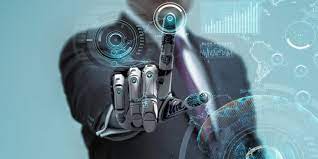The Evolution of High Tech
High tech, short for high technology, refers to advanced technology that is at the forefront of innovation and development. Over the years, high tech has revolutionised the way we live, work, and communicate.
One of the key aspects of high tech is its ability to constantly evolve and adapt to changing needs and demands. From the invention of the first computer to the development of artificial intelligence and virtual reality, high tech has come a long way in a relatively short period of time.
High tech has had a profound impact on various industries, including healthcare, transportation, communication, and entertainment. It has enabled us to achieve feats that were once thought impossible and has opened up new possibilities for the future.
As high tech continues to advance at a rapid pace, it is important for individuals and businesses to stay informed and adapt to these changes. Embracing high tech can lead to increased efficiency, productivity, and competitiveness in today’s fast-paced world.
In conclusion, high tech plays a crucial role in shaping our world and driving innovation across all sectors. By embracing new technologies and staying ahead of the curve, we can harness the power of high tech to create a brighter future for generations to come.
Demystifying High-Tech: Understanding Products, Definitions, Examples, and Comparisons with Low-Tech
- What are high-tech products?
- What does it high-tech mean?
- What is an example of high-tech?
- What is high-tech vs low-tech examples?
What are high-tech products?
High-tech products refer to advanced technological devices or systems that incorporate cutting-edge innovations and sophisticated features to enhance user experience and performance. These products often leverage the latest breakthroughs in science and engineering to deliver superior functionality, efficiency, and convenience. Examples of high-tech products include smartphones, smart home devices, wearable technology, drones, virtual reality headsets, and autonomous vehicles. High-tech products are designed to push the boundaries of what is possible and continue to redefine the way we interact with technology in our daily lives.
What does it high-tech mean?
The term “high tech” refers to advanced technology that is at the cutting edge of innovation and development. High tech encompasses a wide range of sophisticated tools, devices, and systems that utilise the latest advancements in science and engineering. These technologies are characterised by their complexity, efficiency, and ability to push the boundaries of what is possible. In essence, high tech represents the forefront of technological progress, driving forward new solutions and capabilities that shape the way we live, work, and interact with the world around us.
What is an example of high-tech?
In the realm of high tech, an exemplary illustration would be virtual reality (VR) technology. Virtual reality immerses users in a simulated environment through the use of cutting-edge hardware and software, such as headsets and motion sensors. This innovative technology has found applications in various fields, including gaming, education, healthcare, and training simulations. By providing users with a fully immersive experience that blurs the line between the physical and digital worlds, virtual reality stands as a prime example of high tech’s ability to push boundaries and redefine human interaction with technology.
What is high-tech vs low-tech examples?
In the realm of technology, the distinction between high-tech and low-tech is often a point of curiosity for many. High-tech refers to advanced, cutting-edge technology that incorporates sophisticated features and capabilities, such as artificial intelligence, virtual reality, and robotics. On the other hand, low-tech encompasses simpler, more traditional technologies that may not be as complex or innovative, such as basic tools, manual processes, and mechanical devices. To illustrate this contrast further, examples of high-tech include smartphones with facial recognition technology and self-driving cars, while examples of low-tech could be a manual typewriter or a simple hand tool like a hammer. Understanding the differences between high-tech and low-tech can provide valuable insights into the diverse range of technologies that shape our modern world.

Leave a Reply